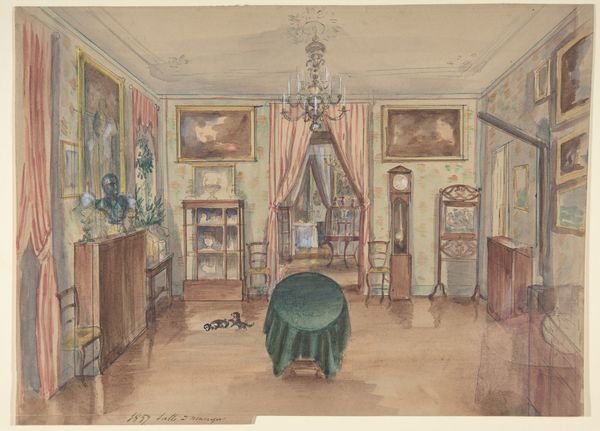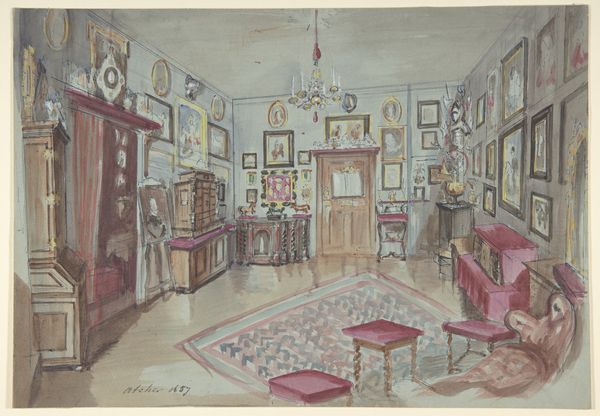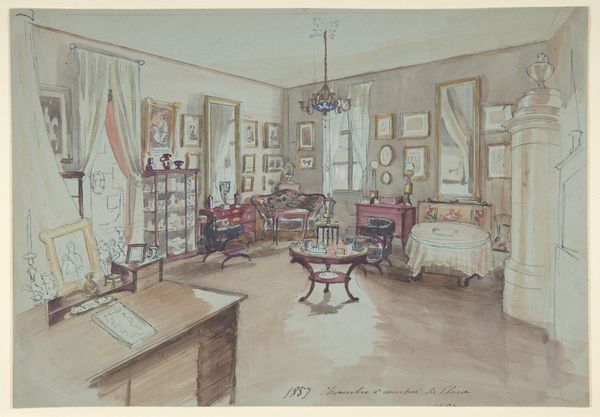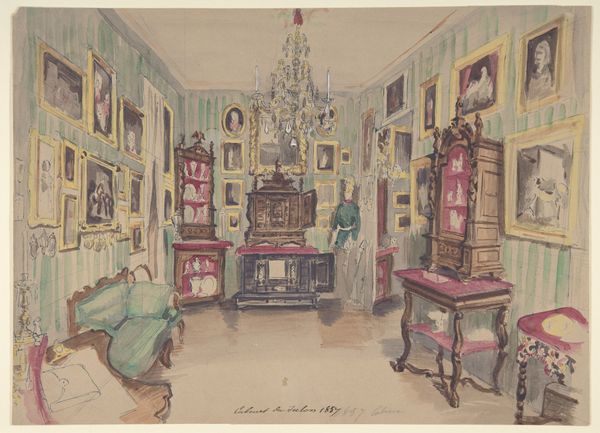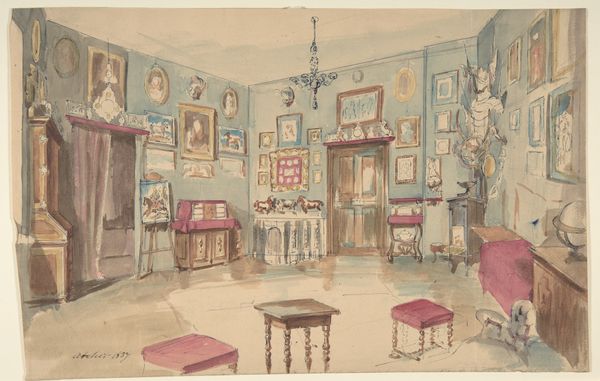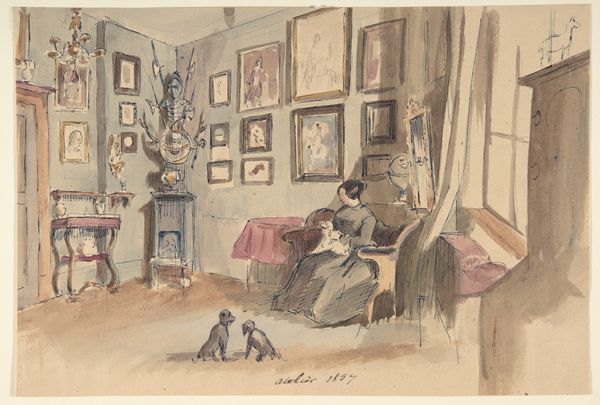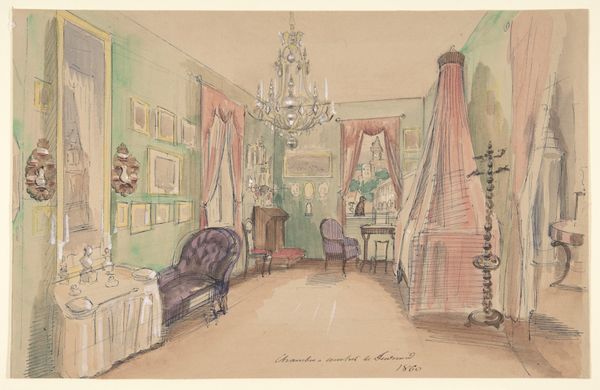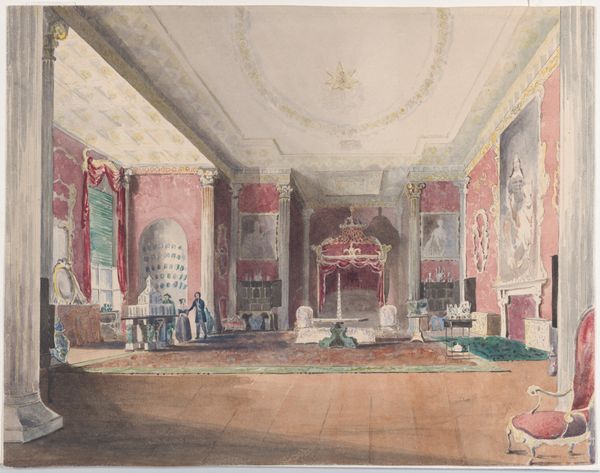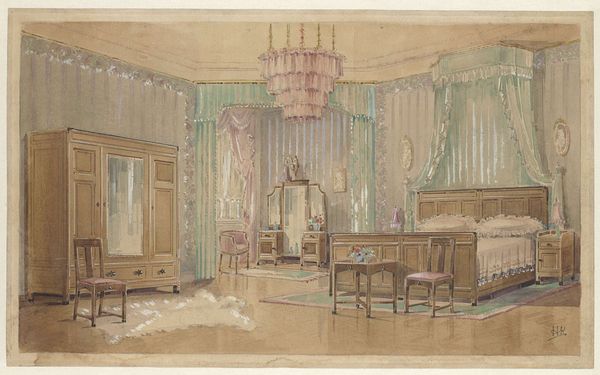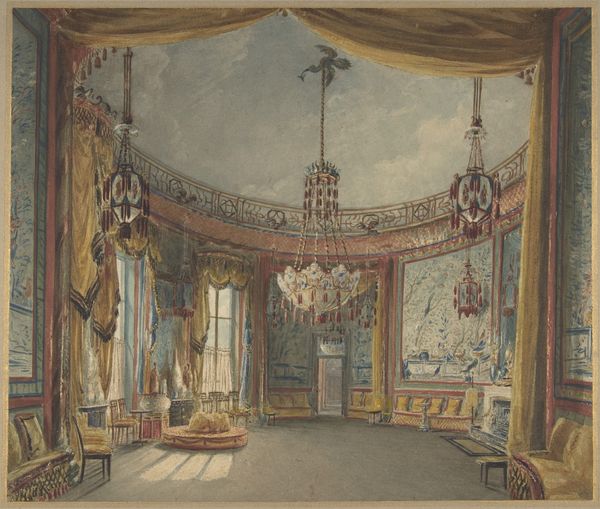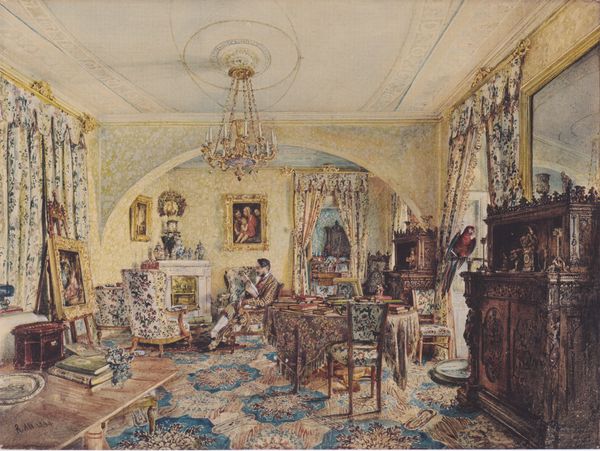
Dimensions: sheet: 8 7/16 x 11 7/16 in. (21.4 x 29.1 cm)
Copyright: Public Domain
Curator: Here we have "Drawing of an Interior: Cabinet du Salon" created in 1855. It's an anonymous work, currently held at the Metropolitan Museum of Art. It employs watercolor and print techniques, fitting within the Romanticism movement and falling under the genre-painting category. What strikes you first about this room? Editor: Well, it certainly feels very full, maybe even a bit claustrophobic? There’s a riot of textures here – the striped wallpaper, patterned fabrics, the ornately carved wooden furniture...it's all competing for attention. Curator: The density is purposeful. Think about the rise of the middle class in the 19th century and the emphasis on displaying wealth and taste. The "Cabinet du Salon" or the drawing-room in a home was a key social space, meant for receiving guests. The material possessions acted as social symbols and artistic sensibility. Editor: It makes you wonder about the hands that crafted all this, doesn't it? Each piece of furniture, the textiles…they all required specialized labor. What’s most apparent is that nothing in this room has been produced using machinery: this aesthetic stands against new possibilities for production afforded by technology. This room would only have been available to those with sufficient wealth, to benefit from artisanal labour. Curator: Exactly, and it demonstrates how objects become visual indicators of class status and identity formation in that period. Each object adds meaning to the space. How objects are collected, maintained and curated in this interior has profound cultural significance. Editor: I'm interested in that layering of portraits on the walls. Almost every space is filled up with a framed picture, the different colours, dimensions of portraits adding complexity and character. Who were they and what level of consumption was expected from the patron? Curator: These are family portraits or depictions of famous figures, which showcase a family's lineage, connections, and cultural capital. They were ways to participate in a wider social and intellectual landscape. And the layering reinforces that theme. The display shows a lineage that must be continually asserted. Editor: It all creates this sense of… theatricality. Like a stage set for domestic life. It’s a crafted environment designed for specific types of social performances. It is, indeed, a world of representation. Curator: I agree, the attention to the staging makes me consider its lasting value as a source material, documenting taste, design and social mores in the mid-19th century. Editor: Indeed, by scrutinizing this watercolor through the lens of craft and its production, we can delve into societal structures and power relations.
Comments
No comments
Be the first to comment and join the conversation on the ultimate creative platform.
